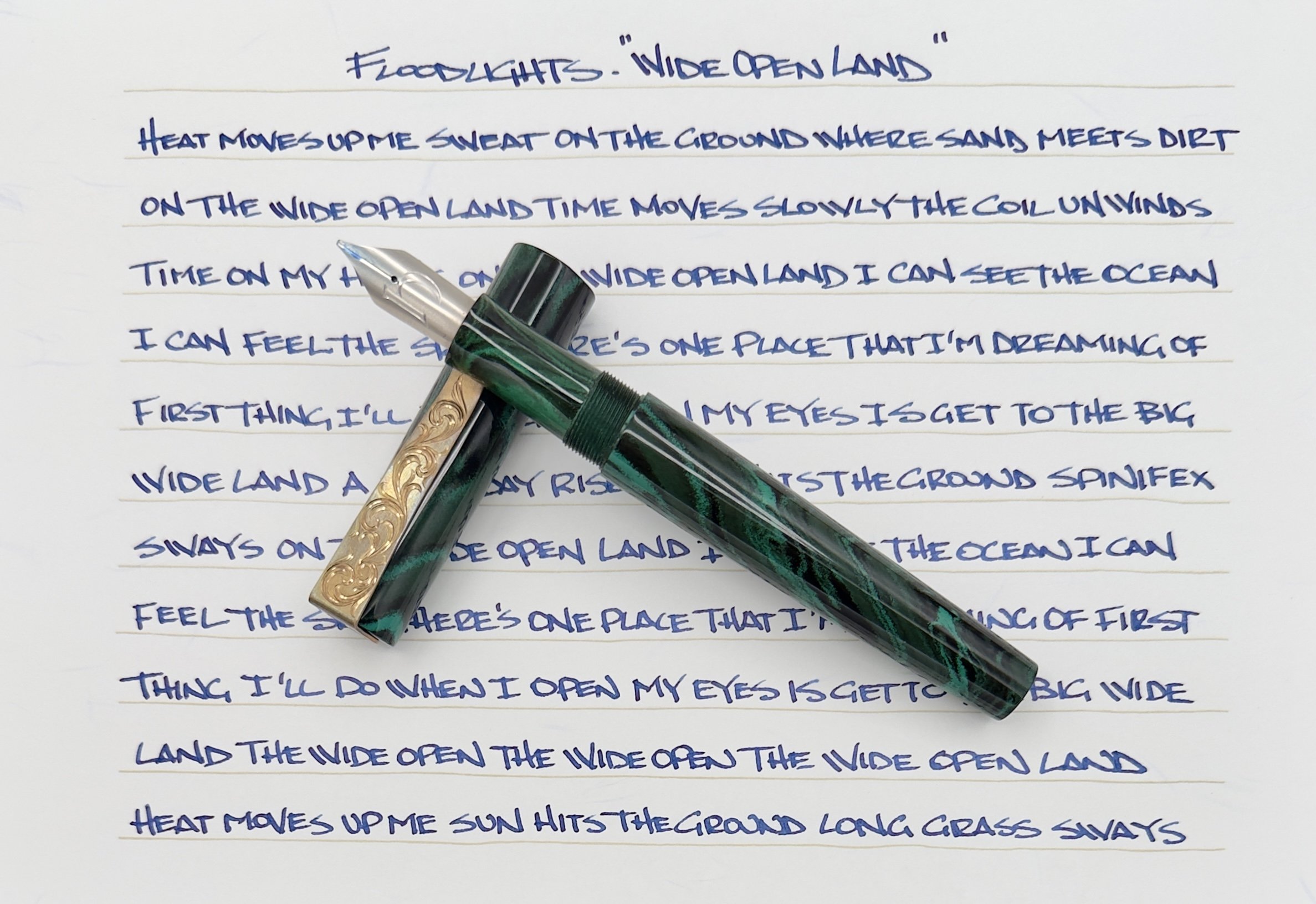It’s rare that I’m left speechless, but when Tim Cullen of Hooligan Georgia Pens says “I’m going to make you a pen,” what do you say?
Yes, please.
That’s how it began with Tim and I at the 2024 Atlanta Pen Show. That is where we met for the first time, a few months after Caroline’s Meet Your Maker profile. I had seen Tim’s work before, which always stood out to me as being extremely unique and customized to the client.
So yeah, Tim basically said “I’m making you a pen. I’ll be in touch later in the year when your spot comes up.”
That’s the thing with Hooligan. Since Tim’s pens feature hand-turned and hand-made customizations, they take time to make. I think he told me somewhere around 60-70 pens a year? Given the time and detail he put into my pen, I’m surprised it is that many.
If you couldn’t tell by the title, I’m calling this post an experience, rather than a review. Each pen Tim makes is a 1 of 1, and during the making of mine, he communicated with me every step of the way, and involved me in every decision.
“Which material do you want?” Ebonite.
“Which color?” Green and Black swirl.
“What metal for the clip?” That Bronze one looks cool.
“Clip etching?” Duh.
“You know I draw and hand-engrave that myself, right?” Whoa.
“I’m making the nib today. I’ll send it to Mark Bacas when done and you can get a grind on it.” Medium Stub will be perfect.
This is just a sampling of our discussions throughout the process. Tim even asked if he was sending me too many messages, and I said “heck no!” He was legitimately excited to make something and share it with me as he went. I’m the lucky one to be on the receiving end of his craftsmanship.
On delivery at the 2025 Atlanta Pen Show, Tim and I went and sat at the bar so he could spend time with me going over every detail. For example, since he makes his own nibs, he has custom dual-channel feeds made for them. In conjunction with a high-capacity converter, his pens are made to lay down the ink. He also serializes each nib - by hand, of course.
Tim sent me this image before seating the nib.
How the pen writes is a statement befitting the pen itself. It’s a big pen that is well-balanced, and comfortable to use. The ink flows smoothly and consistently, and the addition of the nib grind allows it to fit my handwriting style perfectly. It’s as awesome to use as it is to look at.
The Waterfall Clip, in all its glory.
I hope using the pen is the end goal of anyone working with Tim. I think that is the best way to respect craftsmanship like this. I’ll be using it frequently, and I’ll be sharing it with others, too. This pen deserves as much, and to be on the receiving end of a gift such as this, well, that’s the least I can do.
In a bit of fortunate timing, I learned Tim is starting up a YouTube channel to share his work, and to help makers who are interested in making their own pens. From his Instagram:
“Have you ever wanted to learn to make truly one of a kind custom fountain pens? Well I’ll be making easy to follow instructional videos that explain my process on a wide range of topics, from nib making to hand engraving. I also hope to have a few special guests during this chapter of my pen making career.”
How lucky are we to be in a community that loves to share like this? We have seen it for years with people like Jonathon Brooks, Jim Hinze, Shawn Newton, Jon Tello, and on and on and on. I try to do the same, and will always support those who do.
To wrap this experience up, how can you get a Hooligan Pen, and how much are they? Tim only does custom work, so you can contact him via his website to discuss your ideas. And as you might imagine, the cost varies based on the design and materials. My pen was a gift from Tim, and I never inquired as to what it would sell for. Based on time, materials, and the level of detail and craftsmanship, you can assume it will have a cost relative to the work involved.
If you have dreamed about creating a specialty pen just for yourself, or to tell a story and share with others, I can’t imagine a better choice than working with Hooligan Pens and seeing what you and Tim can create. Thank you Tim for letting me be part of your journey!
(Hooligan Georgia Pens gifted me this pen at no cost.)
Enjoy reading The Pen Addict? Then consider becoming a member to receive additional weekly content, giveaways, and discounts in The Pen Addict shop. Plus, you support me and the site directly, for which I am very grateful.
Membership starts at just $5/month, with a discounted annual option available. To find out more about membership click here and join us!



























